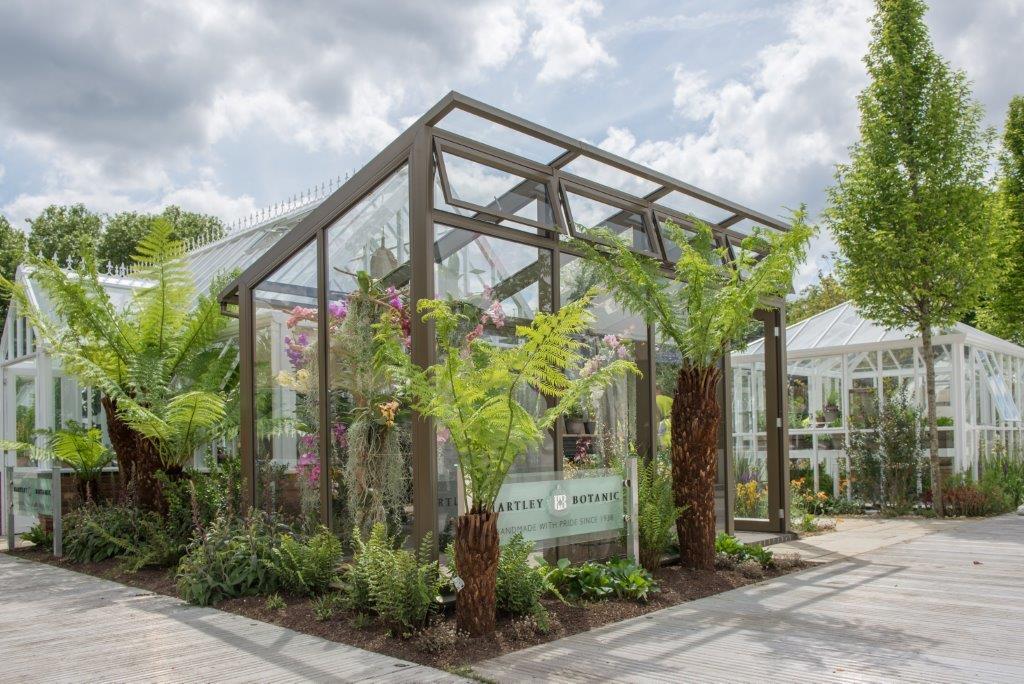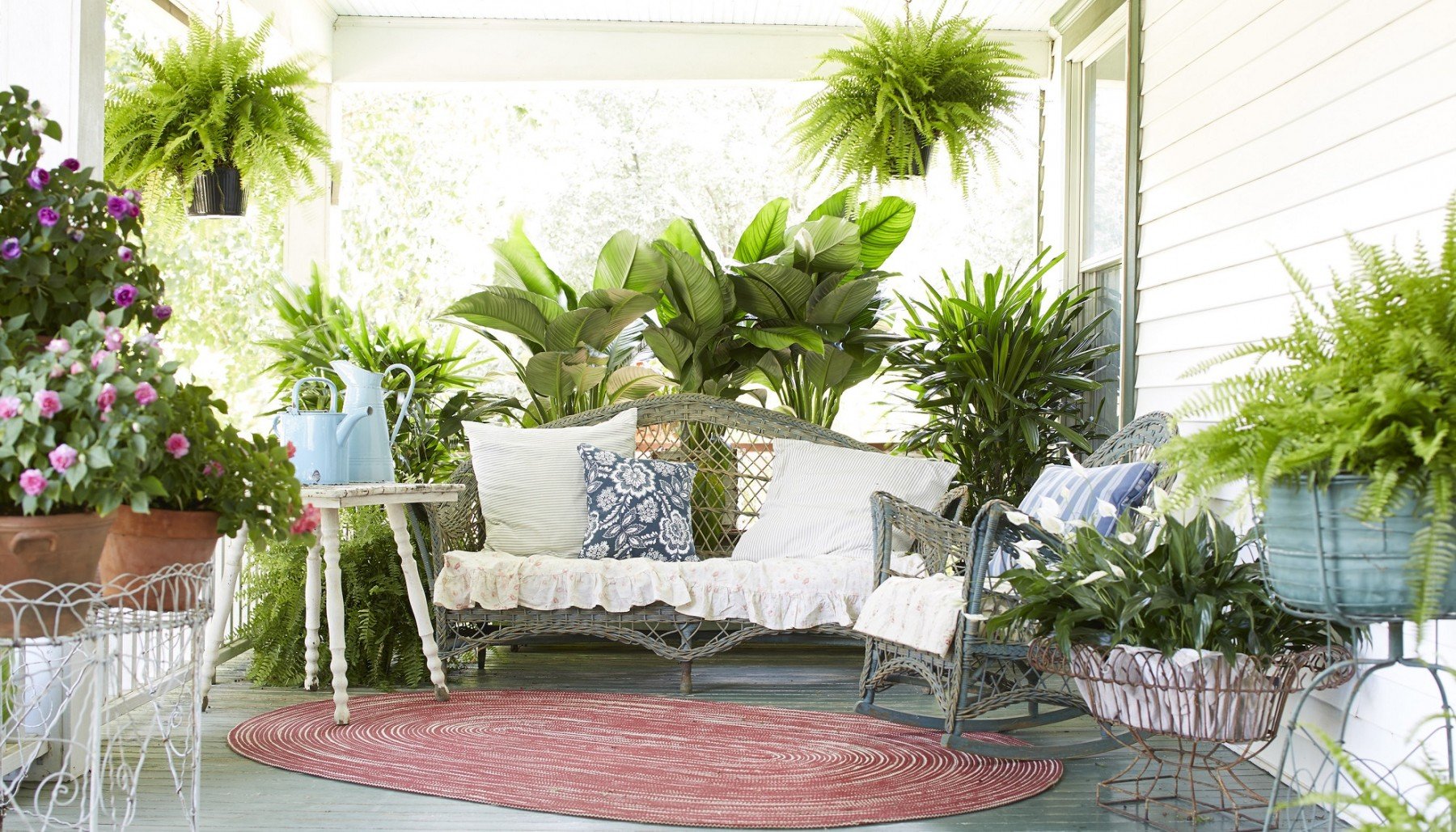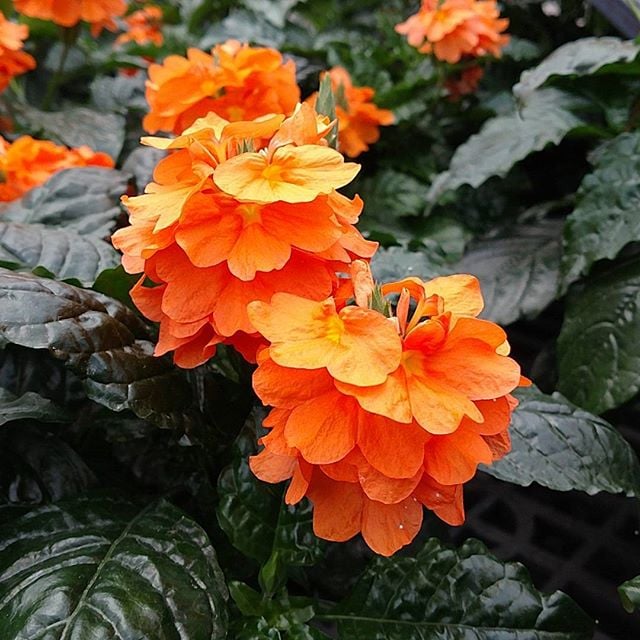Conservatories offer all sorts of opportunities to open up your home to the outdoors while at the same time letting you and your plants live in comfort. The newest addition to the Hartley Botanic range of glasshouses is the stylish ‘Opus’. Its clean lines and walls of glass speak of mid-century modern style so very suitable to home designs old and new.

Having just completed my next book, ‘Mid Century Modern Landscapes’ you could say I am super sensitive to the concept of outdoor living and what walls of glass can mean to a gardener. That, and the fact that my home, a MCM ranch built in 1958, is generously endowed with lots of big windows, has me pretty excited about houseplants. But there is a downside; I am known as a serial houseplant killer. Oh, the African Violets, Rubber Trees, and sundry other innocent exotics I have dispatched with an efficiency Hannibal Lector would envy. Would a conservatory add-on to the family room expand my floral empire nicely, or simply become another kill zone? Even though plants seem to revel in the airy brightness of the main living space, full-on sunlight in the arid Rockies might be a hard sell to houseplants, many of which hail from subtropical zones.
“No worries,” says Justin Hancock, “there are three basics to get right to get along with houseplants.” He would know, as a horticulturist at Costa Farms, the second-largest grower of tropical ornamentals for the US market. He was also a garden editor for Better Homes and Gardens so fully understands the uncertainties and challenges facing home gardeners.
Justin’s Basics to Success with Houseplants are:
- Follow the light, because if it’s not right the plants won’t be either. And indoor light can be either low, medium or — as one might find in a conservatory– high, which can be the most difficult to manage.
- Be true to your gardening style, which means being honest about how hands-on you will be with watering. Are you the sort of gardener that will make occasional passes with a watering can, or be there for your plants in the sure and certain knowledge that they love you back?
- Remember where these plants come from, and pay attention to ambient humidity. Thankfully, most will do fine in average home humidity, but in times of high heat, augment the moisture in the air with spritzes of water.

Expanding on Justin’s recommendations under each rule, he advises that high light is harder to manage unless you depend on cacti and succulents; aroids, plants that take their needs from air are denizens of bright light, look for the word “xeric” to identify other candidates. Medium and low light conditions are easier to deal with, and most broadleaf tropicals fall in those categories. A glasshouse with a south-facing aspect will require shading to make it livable.
Mid-century modern homes often had indoor planters built into the floors, most often located in the home’s entrance foyer, planted up with a range of subjects of varying heights and textures; Justin advises designing similar layered planting displays with an array of potted plants. To do this, for the upper layer select plants that do well in high light, like ficus, palms or other tall growers; in the dappled shade of their canopy put medium-light plants like sansevieria or Chinese leaf, and beneath that the low-light-lovers, like peace lily. And for groundcover, pilea or baby’s tears will complete the indoor “island bed.”
Deciding your watering style beforehand will help you avoid the mistake of putting grouping thirsty plants with plants that drink like camels, ie. now and then. If you see the word aquatica in the Latin name, says Justin, you know it’s thirsty.

Compost is important, of course. What’s around the roots impacts the plant’s water intake and nutrition. And all plants appreciate a routine feed with a balanced fertilizer. Don’t stress out about it, but don’t think your plants can live without food.
Potting, too, is easier these days, and you can forget about putting gravel or broken pots in the bottom of the container. “It’s not helpful,” Justin explains. “Gravity will pull water down and out of the pot no matter what is in the bottom.” What is helpful, though, is putting gravel in the saucer or tray on which the plants stand; to catch water flowing out and to provide some ambient humidity as collected water evaporates.
Everything except cacti and succulents will be fine in average home humidity, but where it is low, as in the dry southwest and high prairie, it’s wise to augment it. Which is another reason to group plants. Plants breathe through their leaves, and their collective transpiration raises ambient humidity to their mutual benefit.
A final word to the wise: Healthy plants are strong plants. The conservatory is not to be confused with a plant nursing home where patients from big box neglect are brought to recover. Except they probably won’t, and will just make everyone else feel bad.
Ethne Clarke, 2017.


